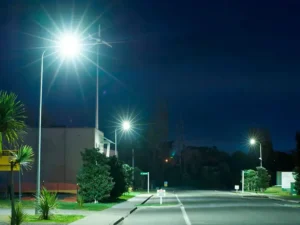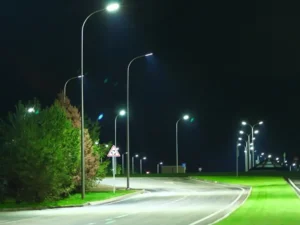Introduction:
Today, the world is all about convenience, and nothing spells convenience than LED lights. These lights have sleek designs, last long, and save energy. Because of their generally favourable traits, our current era has said a silent goodbye to incandescent bulbs. But even though LED light bulbs seem invincible, they can sometimes falter.
Imagine resting in your favourite spot after a tiring day. And just as you settle in the light of your LED bulb, you notice a flicker. While a single flicker might not be an issue, continuous disruption of light and shadow can be annoying. Your LED lights flickering could raise many concerns about safety and electrical issues. But not all LED light bulb issues should make you panic and run. Occasionally, it could be as simple as a loose connection or inadequate power supply.
In this article, we will explore the common causes of why LED lights flicker. After revealing the causes, we will provide possible solutions to your flickering LED lights. Read on for more.
Why are my LED Lights Flickering?

LED lights flicker through a rapid and irregular shift in brightness from a bulb. It is characterized by a change in light patterns and illumination. Flickering LED lights impact the quality of your experience. They are frustrating and even cause headaches and eye strain if left unattended.
LED light bulbs don’t need a heating filament to generate light. Instead, they are semiconductors that convert electricity into light. This makes them heavily reliant on electric power, an almost constant resource. But these bulbs still develop issues. So, a common concern among users is, “Why do LED lights flicker?”
Common Reasons Why LED Lights Flicker
1. Loose Connections and Improper Installation
While it may appear like a minor issue, loose connections within your LED fixture wreak havoc on its output. Poor connections cause static and interruptions in power transmission, which leads to inconsistent electrical flow to the LEDs. This results in flickering LED lights that disrupt the serenity of your space.
Apart from loose connections, incorrect wiring and improper installation can make your LED lights flicker. Electricity requires a clear pathway to flow into the LED bulbs. So when the wires are loose or incorrectly connected, there will be an interruption of flow. These interruptions will then manifest as flickering LED lights.
But we have good news for you. The solution to these issues is inside your installation manual. By following the directions inside the instruction manual, you can minimize the risk of flickering due to faulty wiring. You can also consult a professional to assist with the installation if you feel unsure.
2. Incompatible Dimmers
Not all LEDs have the same design, and the same goes for dimmer switches. Traditional incandescent dimmers operate by quickly turning the bulb on and off. This rapid on-off cycle is not suitable for modern LED lights. If you use a dimmer switch for incandescent bulbs, the result will be irregular dimming or flickering.
3. Voltage Fluctuation
Another reason why LED lights flicker is voltage fluctuation. Ideally, the electrical pressure within your light bulb remains constant with electricity. However, several factors can disrupt this balance and lead to LED lights flickering. One culprit behind this is inadequate power supply. Inconsistent power supply may shift between high and low pressure, mimicking voltage fluctuation. These shifts could be due to issues with the power grid or your transformer.
4. Overheating
Despite their efficiency, LED bulbs become vulnerable to flickering when they overheat. Unlike traditional filament bulbs that generate light through heat, LEDs convert electric current to light through electroluminescence. But this process isn’t exactly heat-free. During the conversion process, a small amount of heat gets released as a by product. Heat generation is normal, but higher temperatures cause various issues, flickering included.
There are two main reasons why overheating makes LED lights flicker. First, LEDs are sensitive to heat, so a spike in temperature increases the internal resistance of the LED chip. Following this is an interruption of power flow and irregular output that manifests as flickering. The second reason is the degeneration of the LED chip. Intense heat can damage the delicate internal components, reducing their lifespan and efficiency.
5. Poor-quality LED Light Bulbs
The allure of a bargain is undeniable. But when it comes to LED bulbs, cheap isn’t always the best. Crude and sloppily made LEDs may seem like a great option upfront, but they are often the reason for flickering. LED light bulbs comprise high-quality components designed for longevity and efficiency. Cheap alternatives cut corners on quality by using substandard parts for a lower price point. This results in flickering and other light bulb issues that aren’t worth the investment.
Solutions to Flickering LED Lights

1. Check for a Compatible Dimmer Switch
Not all LED-compatible dimmer switches work for the same bulb. Before getting your dimmer switch, check its rating to see the exact wattage it can handle. It helps to choose a dimmer switch with a rating that supports the wattage of your LED bulbs. This will prevent flickering issues and ensure that you enjoy your LED experience.
You could also refer to the manual or call in an expert to determine how compatible your dimmer is with your bulb. These professionals offer specific guidance that makes your installation process smooth sailing.
2. Invest in Quality Light Bulbs
The initial cost of a high-quality LED bulb might be a reason to pick inferior products. However, you should remember that you are not just buying a light source. Instead, you are investing in peace of mind and long-term value for your money’s worth.
Low-grade bulbs have short lifespans and are prone to flickering. This means that apart from the discomfort they cause, poor-quality LEDs need constant replacement. It negates any initial cost savings you may have envisioned.
Investing in quality LED bulbs ensures that you have a beautiful and flicker-free environment. They are a reliable and long-lasting lighting solution. And as time passes, they save you money and frustration.
3. Seek Professional Help
If you try any of the above solutions and don’t make headway, consult an expert. They will provide you with the necessary guidance for creating a conducive environment. Furthermore, they can assess the electrical unit to identify potential issues. The solutions they provide will help you resolve your flickering issues permanently.